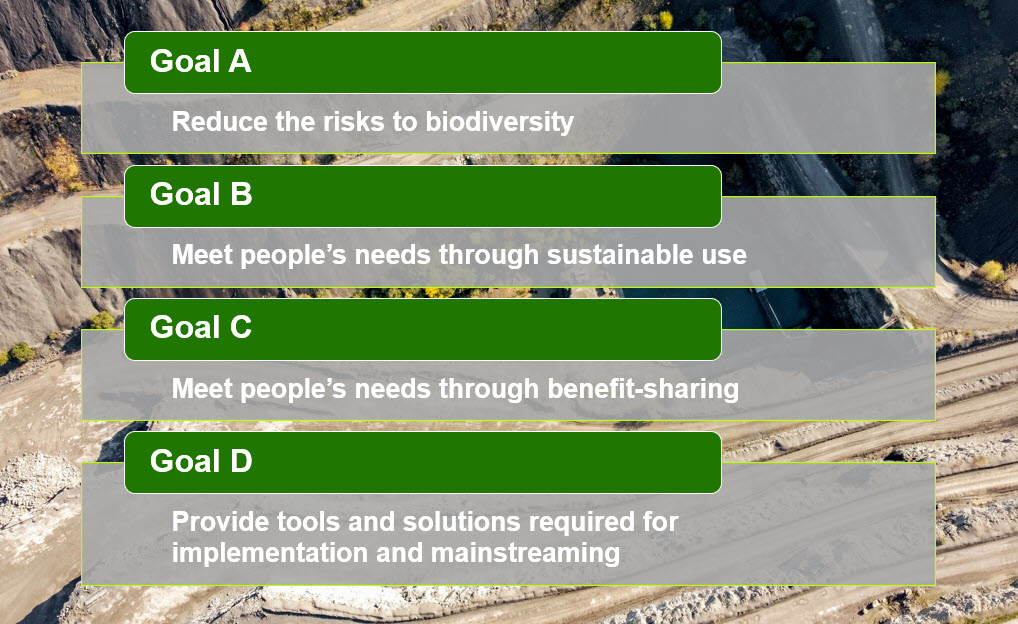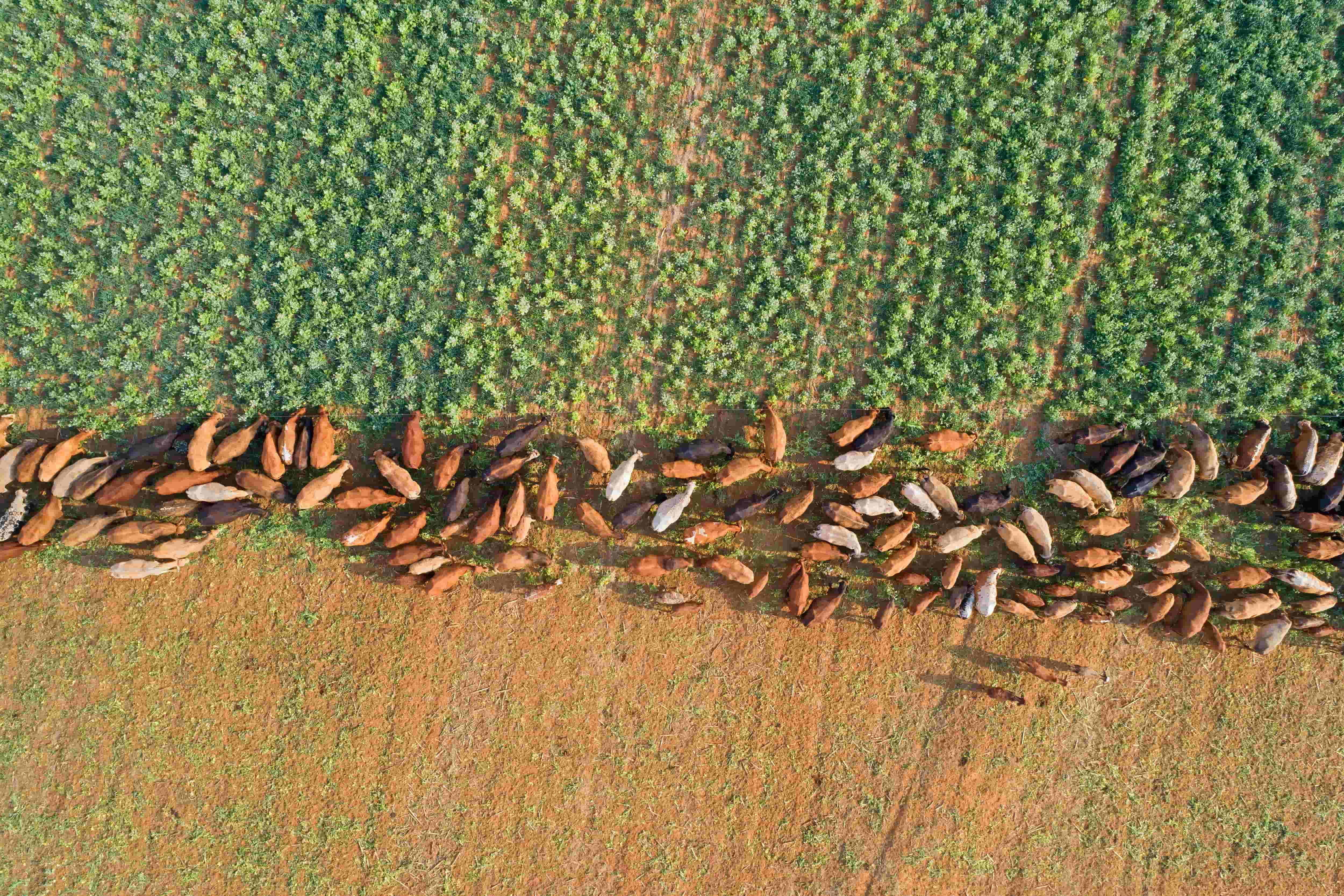At the mid-December COP15 on biodiversity, nearly 200 governments adopted the Global Biodiversity Framework with goals and targets to be met by 2030. Agreeing on the so-called 30x30 target, which commits governments to protect 30% of land and marine areas by 2030, was hailed as a historic breakthrough. Governments now need to spell out in their national biodiversity strategies and action plans how they want to achieve that. Doing so in a credible way will prove challenging.
The commodities sector will need to adapt to higher environmental standards and greater scrutiny by capital markets. This will be costly and will require, among other things, improved internal risk assessments and external reporting.
COP15 adopts Global Biodiversity Framework with 2030 goals and targets
At the UN Biodiversity Conference (“COP15”), which took place in Montreal, Canada between 7 and 19 December 2022, the governments of close to 200 countries adopted the Kunming-Montreal Global Biodiversity Framework (GBF) as a step towards the UN’s 2050 Vision for Biodiversity of “Living in harmony with nature”. Policymakers hailed this as a landmark achievement. The GBF has four overarching goals for 2030. In broad terms:

- Goal A is aimed at reducing the risks to biodiversity: Maintain, enhance or restore the integrity, connectivity and resilience of all ecosystems, and substantially increase the area of natural ecosystems by 2050. Moreover, halt the human-induced extinction of known species, reduce extinction rates, increase abundance of native wild species and ensure genetic diversity within populations.
- Goal B is aimed at meeting people’s needs through sustainable use: Use and manage biodiversity in a sustainable manner and value, maintain and enhance nature’s contributions to humans.
- Goal C is aimed at meeting people’s needs through benefit-sharing: Share the monetary and non-monetary benefits available as a result of using the genetic resources that underpin biodiversity in a fair and equitable manner. Include, where appropriate, indigenous people and local communities. Contribute to the conservation and sustainable use of biodiversity.
- Goal D is aimed at providing the tools and solutions required for implementation and mainstreaming: All countries, and in particular least developed countries and small island developing states, should have the adequate means to implement the GBF. This includes financial resources, technical and scientific capacity and access to necessary technologies.
In terms of 2030 targets, COP15 highlighted the targets to protect 30% of Earth’s lands, oceans, coastal areas and inland waters (generally known as the 30x30 target), reduce harmful government subsidies (i.e., subsidies that encourage ecosystem-destruction or biodiversity loss) by $500 bn annually and cut food waste by half.
Campaigners had hoped that the final declaration would commit countries to nature positive – biodiversity’s counterpart to climate change’s net zero. This was an important theme in the draft GBF but was dropped from the final declaration signed by governments in an indication that earlier ambitions had been watered down to find an agreement.
Aiming for a “Paris Agreement moment” for biodiversity: the controversial 30x30 target
At the start of the conference, Canadian prime minister, Justin Trudeau, urged policymakers to agree on the “30x30” target. For many participants and observers this target represents the biodiversity counterpart to Paris Agreement’s goal to limit global warming to 1.5 °C above pre-industrial levels. Currently around 17% of the world’s land and 10% of marine areas are under protection. Reaching the target requires a near doubling of land area under and a tripling of marine areas under protection. Despite agreeing on the 30x30 target, the target itself remains controversial, with critics concerned that such area-based conservation could, among other things, undermine the rights of local communities and indigenous people.
Meeting the 30x30 target will be challenging
Focus on the 30x30 target, rather than the details around how to meet specified targets, means that there is a long list of questions that need answering
Meeting the 30x30 target will be challenging. Unlike climate-change mitigation, where every unit of greenhouse gas emissions saved will have the same impact on global temperatures regardless of where it was saved, reducing the risk of a loss in biodiversity must be done at the global, national and local level. Policymakers need to find answers to a long list of questions, including:
- What criteria should be used to identify the new additional land and marine areas to be protected to meet domestic targets?
- What does ‘protected’ status mean - would some form of economic activity still be allowed? Could certain economic activities be ‘carved out’ of protected areas?
- How to compensate those affected by such decisions, either as the land designated might not be in public hands or in terms of loss of economic activity, be it from mining, farming, industrial or leisure activities?
- How to balance the interests of different parts of society, different objectives (e.g., economic growth and employment opportunities versus environmental protection), ensure that protected areas actually improve biodiversity and how to protect the rights of those affected, including indigenous people and local communities?
An increase in financial transfers but not enough to meet developing countries’ needs
There are also questions to answer on the international level, including how much richer countries should pay poorer countries to protect a greater share of their land and marine areas to meet global targets. Some areas are much more valuable in terms of biodiversity than others and therefore should be considered as global public goods worth protecting by the global community. These include, for example, the rainforests of Brazil, Indonesia and the Democratic Republic of Congo, which formally launched an alliance in mid-November 2022 to cooperate more closely on forestry conservation. At COP15 several emerging economies including Brazil, India and South Africa argued that they would require substantial financial and technical support to achieve these targets.
To meet this requirement, it was agreed that richer countries would provide at least $20 bn per year by 2025 and then at least $30 bn per year by 2030 to developing countries. We expect that this will not be sufficient to meet developing countries’ needs. As a result, as with climate finance, which dominated the COP27 climate summit on loss and damage, we expect biodiversity-related financial transfers to become an increasingly contested issue over coming years.
Governments will need to update their National Biodiversity Strategies and Action Plans
The 2015 Paris Agreement on climate change established that governments need to submit national climate action plans, the so-called Nationally Determined Contributions (NDCs). These have proved critical to the progress on climate-change mitigation and are increasingly used by governments to set out their climate-change adaptation plans as well. At COP15, governments agreed to update their National Biodiversity Strategies and Action Plans (NBSAPs) to reflect the new 2030 targets. Given the long list of unanswered questions, doing so in a credible way will likely turn out to be challenging.
We expect that governments will pay particular attention to the extraction of critical minerals in their updated strategies and action plans. Seven developed countries – Australia, Canada, France, Germany, Japan, the UK and the USA – used COP15 to launch the Sustainable Critical Minerals Alliance. The objective of the alliance is to ensure the prevention of biodiversity loss, engagement with indigenous communities and the phasing out of greenhouse gas emissions from the mining of critical minerals required for the transition to a low carbon economy. What constitutes critical minerals will be discussed at the 8th International Mines Ministers’ Summit in Canada in March 2023.
An explicit role for private-sector finance to help meet biodiversity goals
COP15 emphasised the role of private-sector finance in meeting goals but fell short of ambitious targets
At COP15 governments also agreed to mobilise at least $200 bn annually in domestic and international biodiversity-related funding by 2030. This is more than the estimated $154 bn spent today, but falls well short of the required $384 bn by 2025 and $484 bn by 2030 estimated by the UN Environment Programme (UNEP). Despite this shortfall, private-sector participants welcomed the agreement as it highlighted the role the private sector could play in delivering biodiversity goals. According to UNEP, only around 17% of current nature-based investment comes from the private sector, leaving a major funding gap going forward that needs to be filled.
Investors align activities with biodiversity targets
Nature-based finance is still in its infancy but developing rapidly, with more than 100 financial institutions from 20 countries, for example, signing up to the Finance for Biodiversity pledge in mid-2022. The pledge calls on global leaders and commits participating financial institutions to protect and restore biodiversity through their financial activities and investments.
Going one step further, international financial institutions launched Nature Action 100 (NA100) at COP15, which tries to achieve for biodiversity what Climate Action 100+ has done in the area of climate change, by committing investors to align their investments and activities with biodiversity targets, such as reduced loss of biodiversity over the short and medium term and a net positive biodiversity impact in the long term. More than 100 financial institutions had signed up to NA100 at the time of the launch, with the organisers expecting more to sign up over coming months.
Monitoring, assessing and disclosing biodiversity-related risks
The GBF recognises the role private businesses and financial institutions can play in achieving biodiversity goals. As such, governments have been tasked to encourage and enable businesses to monitor, assess and disclose their risks, dependencies and impacts on biodiversity on a regular basis. Among other things, all large businesses should do so along their operations, supply and value chains, and portfolios.
Against this background, the Taskforce on Nature-related Financial Disclosures (TNFD) presented its latest draft disclosure framework at COP15. The taskforce aims to develop and deliver a risk management and disclosure framework for organisations to report and act on nature-related risks. Several companies have started piloting the TNFD’s draft framework with the objective of feeding into the design of the final framework, which should be ready for market adoption in September 2023. The pilot covers energy, land use and the built environment, which together account for most of the pressure on biodiversity.
The aim is to make biodiversity considerations integral to corporate and financial decision making. If implemented in full, this could have a significant impact on production along the entire supply chain, including mining activities.
The mining industry needs to adapt to higher environmental standards and increased financial sector scrutiny
Doubling the area of protected land and tripling the area of protected marine environments by the end of the decade will be difficult to achieve. Signatories to the 30x30 agreement will now need to update National Biodiversity Strategies and Action Plans and set out how they intend to meet their targets. We expect this to be challenging.
In the absence of any detailed strategies and plans, it is too early to say how specific mining activities in different countries and regions might be affected. Generally, though, meeting the 30x30 and other targets will make it more arduous for mining companies to operate existing mines. Significant investment might be required to upgrade existing operations to meet higher environmental standards over coming years. Moreover, mining companies can expect to face increasingly stringent permitting processes for new activities, with a rising share of proposed new projects likely to be rejected on biodiversity grounds.
Businesses across the commodities value chain will also need to prepare for much greater financial sector scrutiny as nature-related financial disclosures will become mainstream and investors will increasingly seek to manage their exposures to biodiversity-related risks. This will require, among other things, raising reporting standards, improving internal risk-assessment and management capabilities, funding biodiversity offsets and strengthening internal governance structures. Businesses that fail to do so can expect to find it increasingly difficult to secure funding at attractive rates and might eventually lose access to the capital markets altogether.
Find out more about our Sustainability Services.
Our reputation as an independent and impartial authority means you can rely on our data and insights to answer your big sustainability questions.
Tell me more

